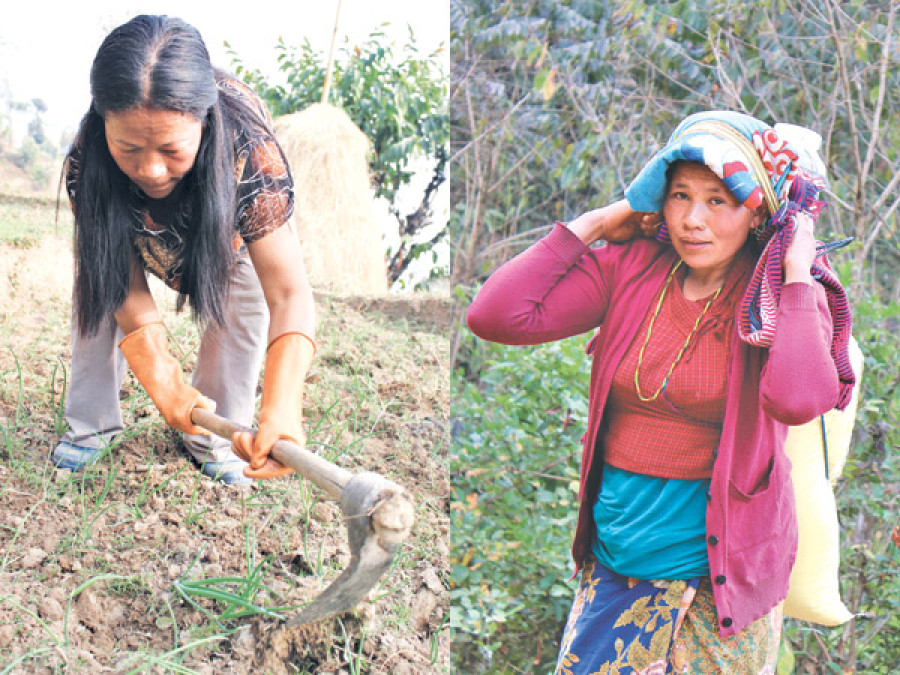Opinion
Migration and rural change
The success stories of the few often distract attention from the hard reality for the majority
Fraser Sugden
The mass movement of small farmers from villages to emerging urban centres has been an integral part of the human story for centuries. However, migration today in countries such as Nepal is vastly different from the migration which transformed Europe in the age of industrialisation. It even diverges from the contemporary changes in rapidly urbanising societies such as China. In historical Europe, cities drew labour from the countryside. Families, either displaced from the land or driven by economic aspirations, would settle and establish new lives there. Agriculture, spurred on by demand from industry and urban consumers, would be left in the hands of larger, profit-oriented cultivators. Wages in cities rose to support new urban dwellers and their families in a rapidly growing economy. In large parts of South Asia, however, this organic process is blocked. The majority of families essentially lead double lives, depending on both farming (often under highly unfavourable conditions) and menial migrant wage work, with neither enough to fulfil their minimum needs, let alone provide opportunities for economic uplift.
A generation ago, migration from rural Nepal was a fraction of what we see today. Agriculture provided many households with their minimum needs, with some supplementary wage. For the poorest households in the hills on marginal rain-fed land, locally produced millet, maize and buckwheat met households’ dietary needs. In parts of the Tarai such as Dhanusha, the circulation of cash was limited. Basic commodities were acquired via the jajmani ritual exchange between castes. Land-poor farmers were dependent entirely upon landlords, and migration was rarely considered as an ‘option’ to escape the cycle of poverty.
Dual livelihood strategy
However, in the last two decades rural lives have been transformed. With economic liberalisation and the expansion of roads and markets, the demand for cash has risen exponentially, yet old social inequalities remain entrenched. The price of agricultural inputs spiralled, along with the rising culture of consumerism. With expanding markets and media, demand for manufactured goods amongst the poorest households has risen, undermining rural industries. Even food habits have changed. Upland farmers who were once satisfied with local grains now aspire to eat lowland rice which has flooded local markets. Increased demand for cash has gone side by side with an increasingly fragile agricultural resource base and growing water scarcity, with increasingly unpredictable monsoons. Against this backdrop, agriculture becomes risky for the marginal and tenant farmers who cannot afford costly investments in irrigation to provide water on demand.
So to meet their subsistence needs, migration is now an integral component of livelihood for the marginal farmer. What differs when compared to the historical European experience is that migration rarely constitutes ‘a fresh start’. It is not matched by large scale industrialisation which absorbs the rural population. Neither is it matched by the development of welfare systems to support workers’ families in growing cities.
Despite the hype about Gulf migration in Nepal and its role in ‘transforming’ Nepal’s economy, the success stories of the few often distract attention from the hard reality for the majority. Migrants are usually on temporary contracts, while wages, which are as low as $200 a month, are little better than what could be received working in factories at home. Farmers take crippling loans to fund the manpower industry, and in many parts of Nepal, usury is flourishing and offering an attractive new source of rent for landed elites. In this context, neither migration nor agriculture alone can provide poorer households with their minimum needs, and livelihood combines both male migrant labour with female-led agriculture. Given the role of the farm in supporting the migrants’ family, and the temporary nature of contracts, there is little pressure for overseas recruiters to improve the wages or benefits. At the same time, migration offers a safety valve for the rural poor, maintaining the social order.
Role of water
In many ways, migration has become a ‘culture’, and decisions made by migrants are not solely economic. Nevertheless, it is against a backdrop of rural monetisation, climate stress and persisting inequality that the dual livelihood strategy has become entrenched. This will only change if serious attention is given to structural inequalities in land and other resources. This needs to be combined with broad-based growth to provide strong domestic employment opportunities. This can increase the choices of marginalised groups, and reduce their dependence on the more casual, menial and temporary migrant labour. In Nepal for example, dependence on remittances has been institutionalised by a weak industrial base and import based economy.
While addressing these structural disparities may be a long way off, there are some short-term pragmatic solutions. It is against this backdrop that attention needs to return to agriculture. It is important to recall the role of water stress in perpetuating the migrant economy. At the same time, water can also be a solution to provide more favourable migration outcomes. More accessible, lower cost and more efficient irrigation is critical to building a more resilient livelihood for those who stay behind by allowing year-round cultivation. It can also provide additional income generating options for potential migrants. However, irrigation development strategy in Nepal must be sensitive to the economic structures which drive migration in the first place—tenure insecurity, marginal holdings and a limited capacity to invest. There is a pressing need, therefore, for technologies and supportive policies which are sensitive to the needs of the marginal farmer majority.
Sugden is a researcher and the interim head of the International Water Management Institute




 5.15°C Kathmandu
5.15°C Kathmandu












